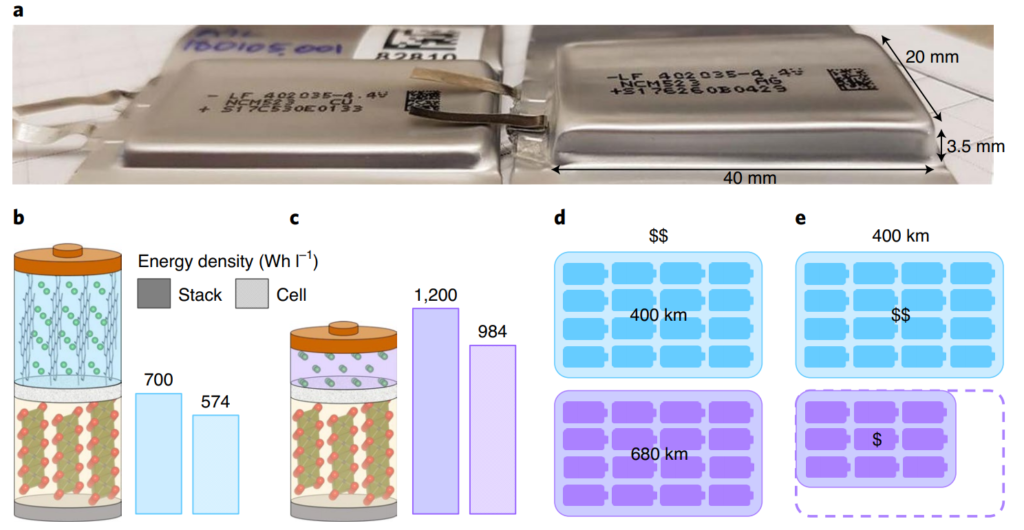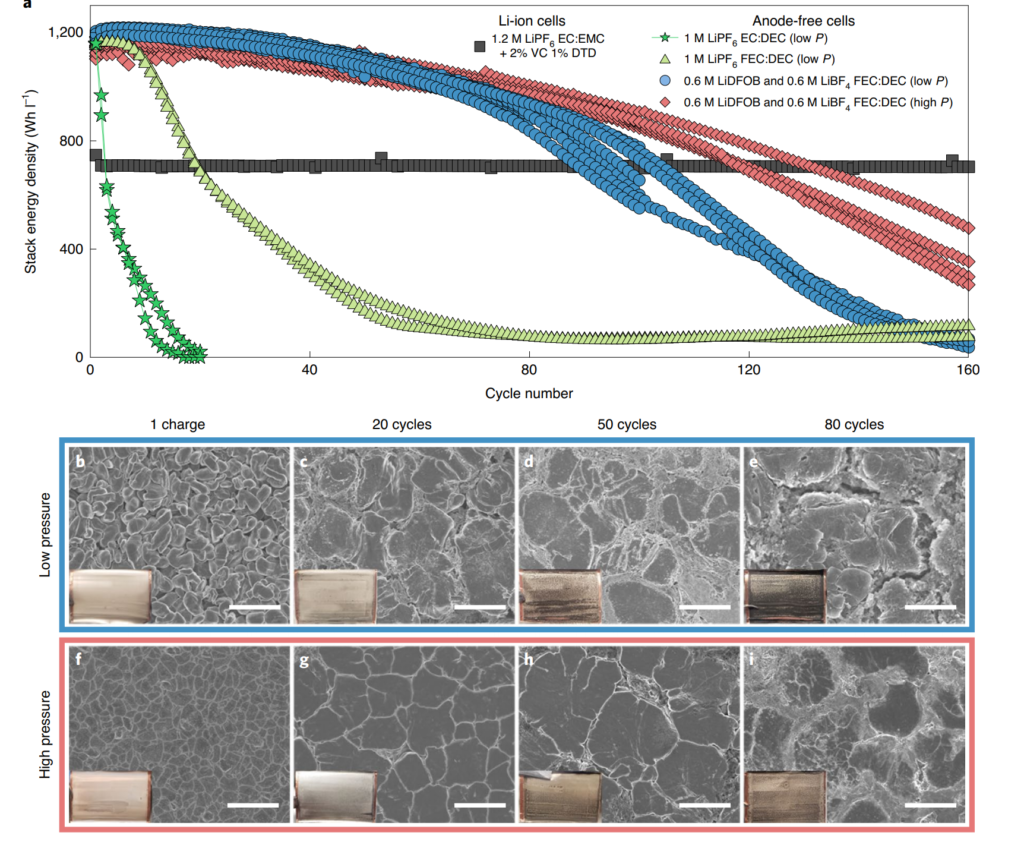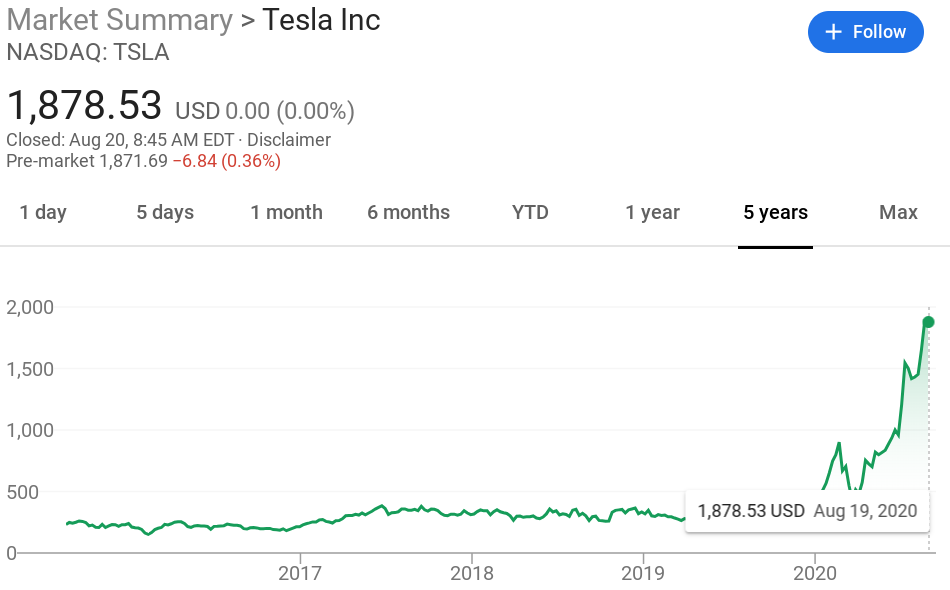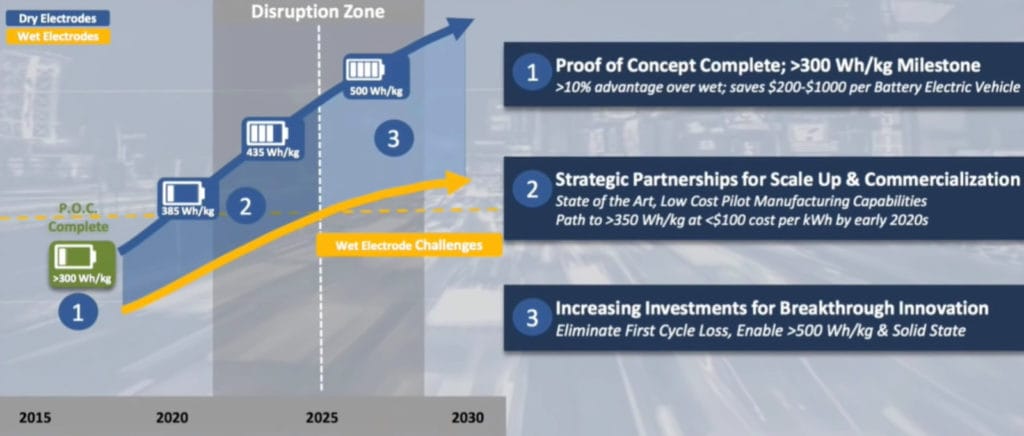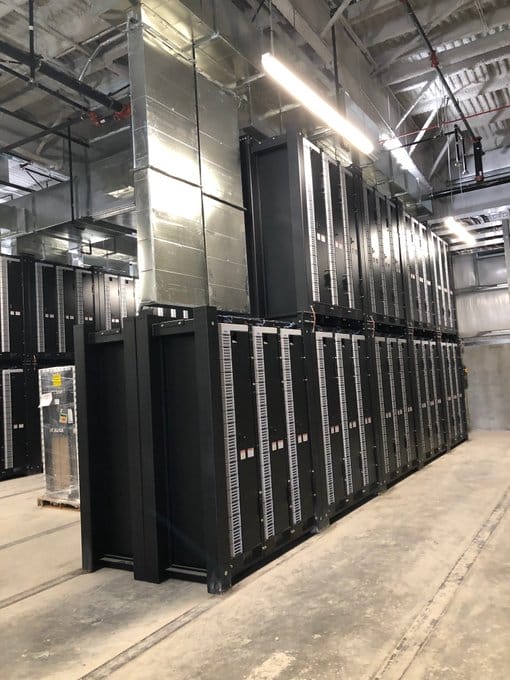I think it’s time we let ourselves free of the shackles of energy storage pragmatism, and embrace some futurism. What once was true: “There aren’t enough resources, the prices are too high, the density is too low, it can’t scale, too short a lifetime, etc.” is no longer. Let us consider a new response to the challenges of energy storage.
I nominate ‘we’re working on it’.
Tesla’s sponsored Canadian research labs, headed by Jeffrey Dahn, have released the second in a series of research papers, Diagnosing and correcting anode-free cell failure via electrolyte and morphological analysis, covering what is really an amazing breakthrough in energy storage energy density – and its increasing life spans.
The authors state that “Anode-free lithium metal cells store 60% more energy per volume than conventional lithium-ion cells.” Looking at the image above, extracted from the paper – you can literally see the thinner battery on the left that holds the same amount of charge as the thicker, standard, battery on the right. In the lower right portion of the image is the hard data that we all care about – the same size battery can travel an additional 280 km (173 miles), or you can get the same distance out of the battery pack using 43% less space/weight/material/etc.
This product is probably a decent amount of time from deployment for many technology reasons, specifically the lifetime of the product. The first research paper on the anode free battery, released last summer, covered this battery when it had a lifetime of only 50 charge cycles. This current research has upped that value to 200 cycles, with various battery types tested above as they approached 160 cycles. These numbers are far short of the many thousands of cycles needed to be viable.
And, if you’re wondering why the below is happening – let’s talk about the above, in combination with the news below this image.
A note I’d like to make is that a lot of this knowledge is discovered and distributed by Fred Lambert at Electrek.co. Some Tesla news and research comes across my radar from other places, but not too much.
First, this anode free 40% research originally hit the news cycle last summer. Then we start getting hints of Tesla’s million mile battery. Next, we hear of the Roadrunner project – a fully designed battery from Tesla, on its own manufacturing lines at $100/kWh and terawatt hour volumes. And recently, we’re hearing that CATL and Tesla are building a factory for that million mile battery.
Plus this interesting nugget that came as part of Tesla’s acquisition of ultra-capitactor manufacturer Maxwell Technologies:
Per electrek, Elon Musk once said that at ~400 W/kg of energy density, we’d start hitting the numbers necessary to have battery powered electric airplanes. This research paper by Dahn speaks of electric aircraft, and the capacitor research from Maxwell above suggests another 25% greater energy density beyond this.
You’ve got to wonder what combination of news and research showman Musk will bring to Tesla’s September 15th’s Battery Day presentation.
Just like solar modules increasing their efficiency greatly affects the cost per kilowatt hour of electricity generated by also lowering the effective price of all supporting hardware and labor, the same will happen with these batteries. If you increase the amount of electricity that a single battery cell holds, then it lowers the amount of wire and metal needed to hold the cells in a single module. And the below racks from the recently inaugurated world’s largest battery in San Diego, California will also hold more batteries – lowering their effective costs.
What we need to admit is that we simply don’t know. Not that it cannot or will not happen.
Here’s a few smart people saying things wrong from a long list that I keep handy:
- “I think there is a world market for maybe five computers.” — Thomas Watson, chairman of IBM, 1943
- “This ‘telephone’ has too many shortcomings to be seriously considered as a means of communication. The device is inherently of no value to us.” — Western Union internal memo, 1876.
- “We don’t like their sound, and guitar music is on the way out.” — Decca Recording Co. rejecting the Beatles, 1962.
- “Radio has no future. Heavier-than-air flying machines are impossible. X-rays will prove to be a hoax.” — William Thomson, Lord Kelvin, British scientist, 1899.
- “Drill for oil? You mean drill into the ground to try and find oil? You’re crazy.” — Workers whom Edwin L. Drake tried to enlist to his project to drill for oil in 1859.

